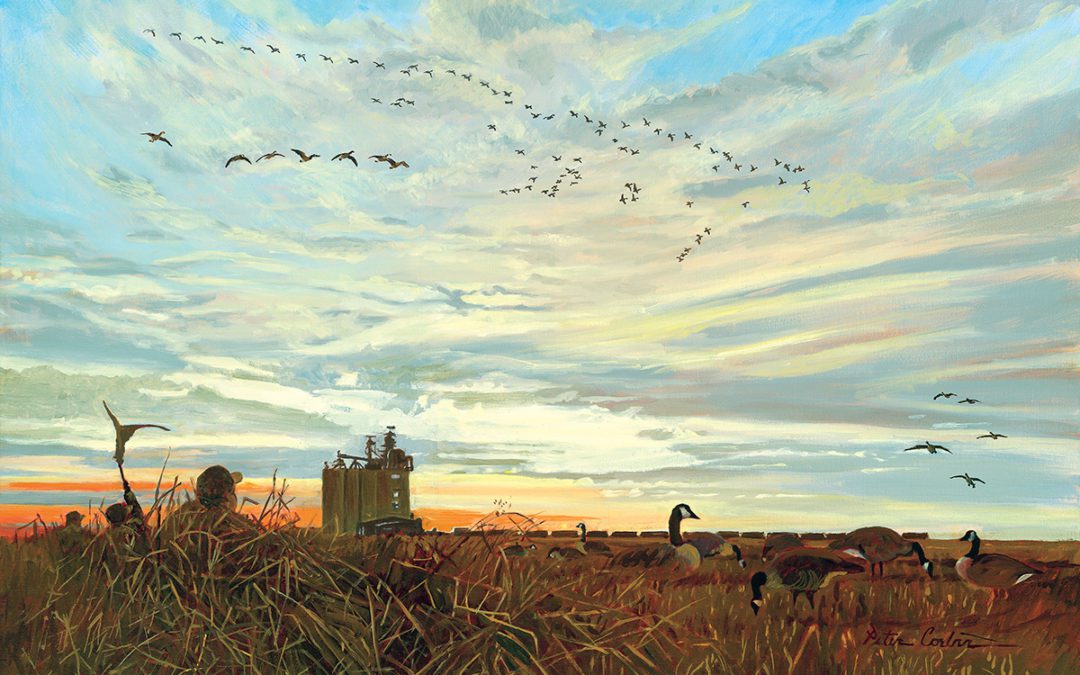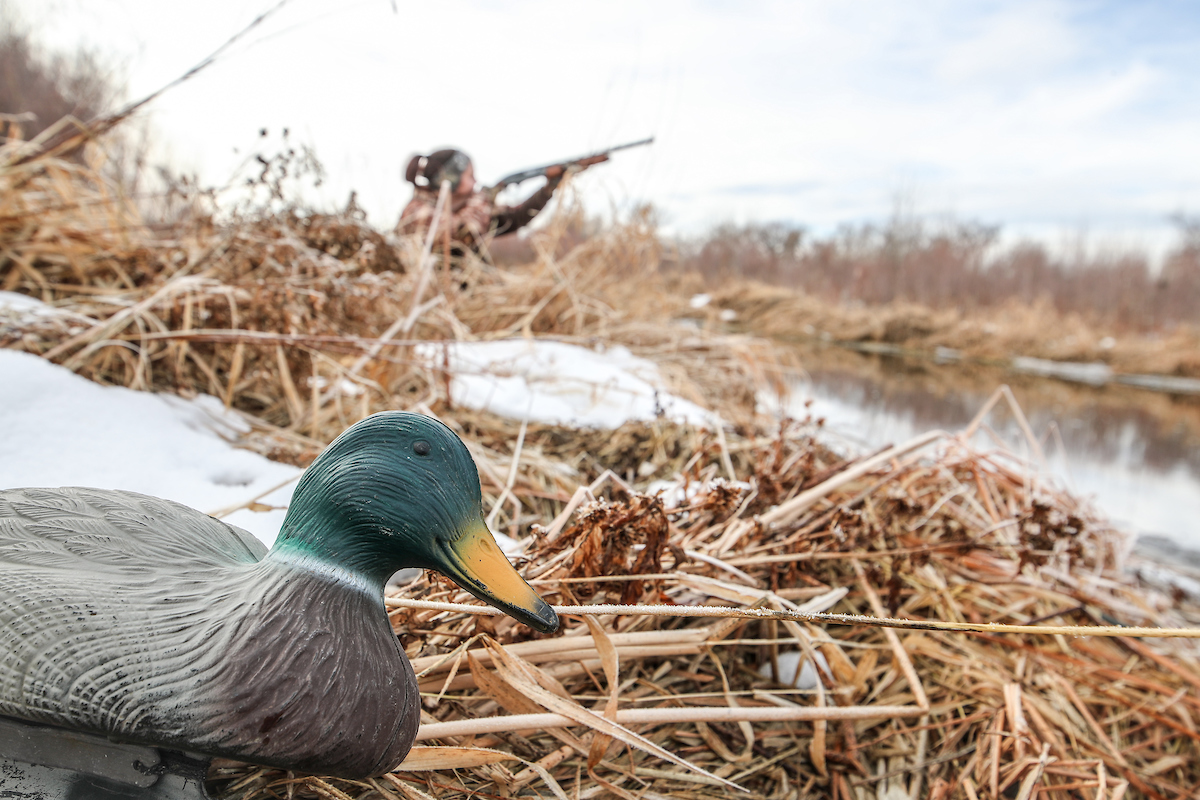Field-hunting geese from a pit blind represents the epitome of waterfowling.
Each gust of wind brought the smell of freshly spread cow manure from the cut cornfield below. The maize had been harvested in the fall, and the ducks, geese, turkey and whitetails devoured any errant ears left behind with the corn stover. This was the year the field needed nitrogen, so it was rotated, and winter rye was planted and fertilized with the slurry.
Now it was winter, and snow dustings covered the field. When the wind gusted the snow parted like the Red Sea, revealing patches of green grass—goose candy. The three-acre pond below completed the scene. The field was a waterfowl’s one-stop shop.
The farmer wanted us there. It wasn’t that he didn’t like Canada geese. He enjoyed having them marinated in apple cider, grilled medium rare, and served with a side of wild rice. He preferred them that way because the geese were pests. They multiplied like rabbits, and they contaminated the water in his pond, which made his cows sick. On top of that, he let all the neighbors’ kids fish the pond for bass and panfish, and there is no joy in getting calls from parents about their kids returning home with green sneakers. Knowing that made it easy to understand why he welcomed us with open arms.
The farmer’s enthusiastic response came within minutes after we asked for permission to hunt. He lit up.
“Sure, boys, absolutely. Shoot as many as the law allows,” he said. “Where are you thinking of setting up a blind?”
“We were actually thinking about digging a pit,” one of us said. “That is, if you don’t mind.”
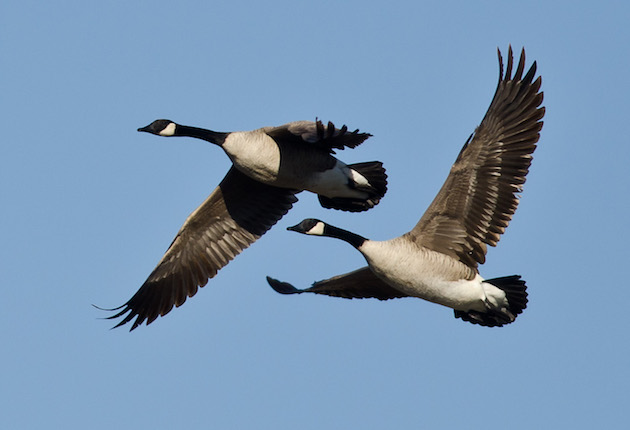
Two Canada geese on the wing. (Photo: RC Keller/iStock)
“Heck no!” he said. “That’s a great idea. Best way to hunt geese for sure. Just remove it come spring. Lemme show you where they all land.”
He drove us over to the field and revealed the perfect spot. We paced around, looked at the wind, the pond, the ridge in the distance, and all that. A consensus formed quickly; he’d done his research over a long time, and we were resolved. Jimmy went to the truck, returned with several shovels, and passed ’em all around.
The farmer looked shocked.
“What the heck are you fellas doing?” he said.
“We’re going to dig the pit.”
“I hope you can shoot better than you can think. Give me a minute . . . I’ll be back.”
A half-hour later we saw him driving a backhoe on the horizon. He was smiling when he arrived, but not so much as we.
“I’ll take some geese off your hands for this,” he said.
“You’d best make some room in your freezer,” I said. “We’re going to fill it up.”
Six of us were privy to this deal, so by the time the hole was dug, we had hauled in and assembled the 2x4s, 4x8s, and -inch plywood to make the box. A couple of planks made for good seats, and we cut out slots to keep our guns safe. When we were done, we stood in awe of our creation. In addition to the added stealth was tremendous comfort. We would be out of the wind, which would keep us warm and dry. On cold days we could fire up kerosene heaters. Heck, on a frigid day we could boil water on a Coleman stove for piping-hot coffee or bouillon. Our masterpiece complete, all we needed was for the season to begin.
It was Jimmy who pointed out the obvious. “We forgot about the roof.”
The ensuing silence was deafening.
It didn’t take long to conspire to add an old garage door for the lid. We found a frame, wheels, and runners at the dump, and we popped it in without much effort at all. Fortunately, one of us was thinking ahead, and that meant we angled it just a hair so we could slide it back easily when the geese dumped in for a landing. The weight of the door caused it to hang down a bit, but that was okay because it left a perfect little sliver of space where we could look through while calling geese on their final approach.
We quickly learned what other waterfowl hunters already knew: field-hunting geese from a pit blind represents the epitome of waterfowling. We suffered no more frozen hands and feet while hiding under cordgrass pulled from a mosquito ditch. There was no more makeshift blind of branches and leaves at the water’s edge of an inland pond. None of us caught spray while motoring a skiff through a chop. A pit blind is to geese as a sinkbox is to ducks, and if below-waterline hunting boxes were legal, I’d use one for sure.
Every hunt was magical, and we killed so many geese that the farmer started to beg off on ’em.
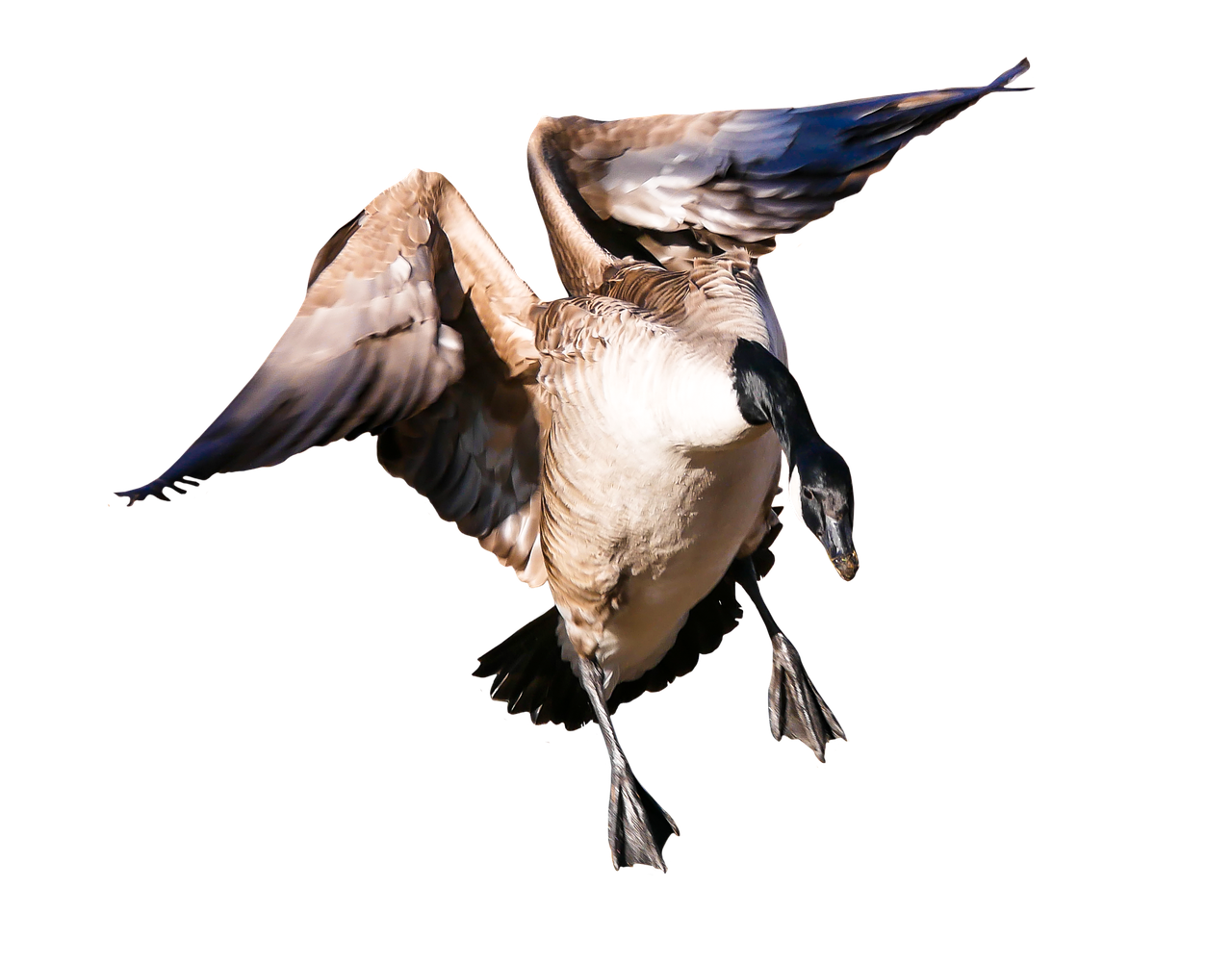
Later in the season the geese started to catch on to us and became a lot smarter. It was our fault, for after we shot up the smaller flocks, we took some birds from the bigger Vees. That proved to be a short-term gain, for late in the season the geese were as skittish as a sinner in church. No matter how much we honked, double-clucked, and flagged, they stayed high in the sky. We were having a heck of a time getting ’em to commit.
Then, just a few days before the season’s end, things sort of spiraled out of control. One December morning flock after flock all joined together to create a mother lode of geese. The sky was black, the view was majestic; if we had a photographer with us, he’d have secured enough images to last a career.
We all agreed not to shoot them, for why would we want to educate so many geese? No, this time we wouldn’t shoot. Instead, we’d let them land, then simply watch them from the blind. Later on when it was time for us to go, we’d shoo ’em away like stray cats on a porch. That way tomorrow might give us a perfect number of small flocks to shoot. I unloaded my gun, placed it in the rack, and looked back through the gap at the back of the door. The view was amazing.
Jimmy’s blood lust boiled over. He couldn’t stand it, and gave us a brief warning just as the geese cupped their wings and made their final approach toward our spread.
“I can’t take this,” he said and threw open the door. “Take ’em!”
The door caught me on the bridge of my nose, right between the eyes. I woke up less than a minute later, but the damage was done. I had no broken bones, just a bump and a bloody nose is all. But there were dead geese everywhere.
The season closed before those geese came back. In the spring we hauled out the blind and stored the boards in the farmer’s barn. We’d be back, for how could we not? If you’ve never shot out of a pit blind, you owe it to yourself to try it. Just be sure to take note if it has a recycled garage door for a lid. The rest is gravy.
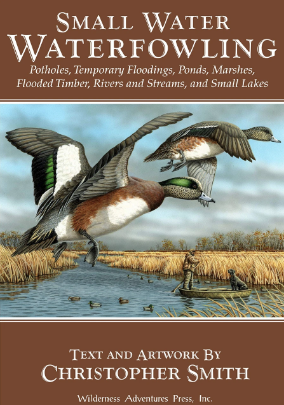 When it comes to actually shooting ducks and geese over water, the action is on the small places – the inland lakes, the ponds and potholes, the floodings and creeks and backwaters. Day in and day out, that’s where the ducks are, and that’s where Chris Smith takes you.
When it comes to actually shooting ducks and geese over water, the action is on the small places – the inland lakes, the ponds and potholes, the floodings and creeks and backwaters. Day in and day out, that’s where the ducks are, and that’s where Chris Smith takes you.
However, each of these places requires a separate technique, alternate decoys spreads and calling concepts, and different gear to use. He tells you how to approach each type of hunting for the weather and conditions. He knows when and when not to call. He describes the skills a good waterfowl dog needs to know for each place, things he’s taught his succession of Labrador retrievers over the years. Buy Now

